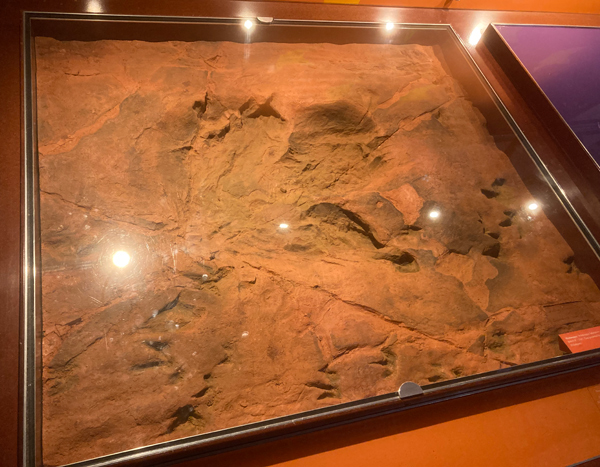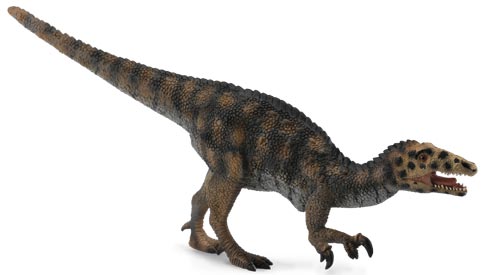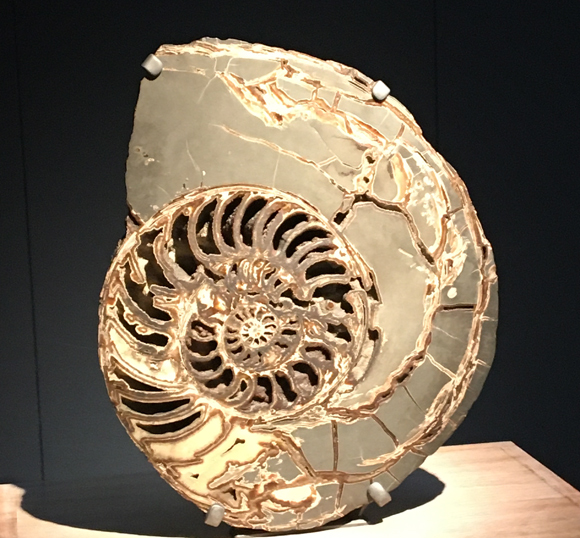Whilst on a short visit to the London Natural History Museum team members at Everything Dinosaur took the opportunity to visit the dinosaur gallery. Amongst the dinosaur bones and exhibits of fossil teeth, a trace fossil was spotted. It was a fossil dinosaur footprint, a specimen from the famous Lark Quarry site (Australia).

Picture credit: Everything Dinosaur
A Fossil Dinosaur Footprint
The Lark Quarry site is regarded as one of the most remarkable non-avian trace fossils in the world. The site, near the town of Winton (Queensland, Australia) preserves the fossilised footprints of at least three different types of dinosaur. When first extensively studied, it was thought the tracks represented a large theropod disturbing smaller dinosaurs and causing a stampede.
It had been suggested that the big tridactyl prints were made by an ornithopod and not a carnivorous theropod.
To read a blog post about the famous Lark Quarry fossil site: Scientists Examine the Lark Quarry Dinosaur Footprints.
Other scientists have suggested that the larger tracks were made by Australovenator. Australovenator (A. wintonensis) was named and described in 2009 (Hocknull et al). It has been classified as a member of the Megaraptoridae family. Australovenator may have been a sister taxon of Fukuiraptor, which is known from Japan.
The picture (above) shows a CollectA Australovenator model from the CollectA Age of Dinosaurs Popular range.
To view the range of CollectA not-to-scale models and figures in stock at Everything Dinosaur: CollectA Prehistoric Life Models.
A spokesperson from Everything Dinosaur commented:
“The Lark Quarry site is extremely important for ichnologists. The site preserves around 3,300 dinosaur tracks. The tracks have been interpreted in several ways. For example, the largest tridactyl prints could represent an ornithopod, or perhaps they were made by a theropod like Australovenator.”
Visit Everything Dinosaur’s award-winning website: Everything Dinosaur.








Leave A Comment